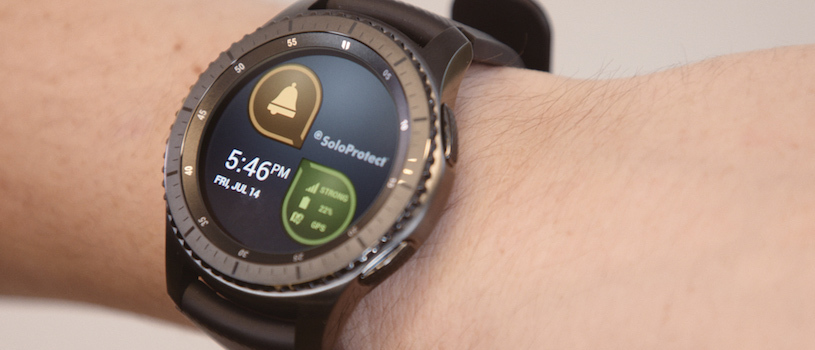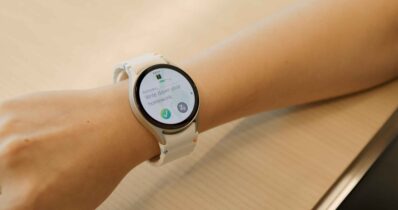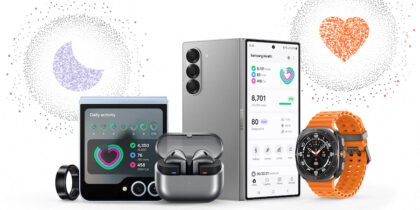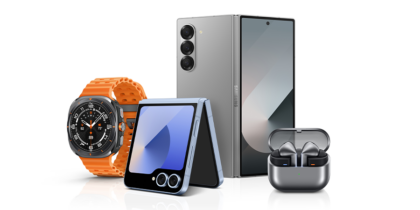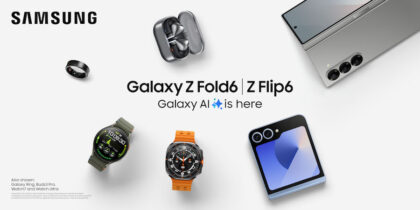Born out of a passion for lone worker safety solutions, SoloProtect was founded in 2003 in the United Kingdom. As a leader in lone worker device development and monitoring, SoloProtect’s devices support more than 200,000 lone workers worldwide, and the company actively monitors another 30,000 workers in eight countries in North America and Europe.
SoloProtect’s latest device, the SoloProtect Watch, provides a custom and simple way to educate, safeguard and protect lone workers. Built on a Gear S3 Samsung wearable, the device is more discreet than a cellphone and can be activated with the touch of a button.
The Demand for Lone Worker Personal Safety Apps
Berg Insight predicts that the European and North American lone worker protection services market will grow at a compound annual growth rate of 17 percent. Notably, the demand for personal safety apps is increasing faster than the device segment.
As the demand for lone worker safety solutions and wearable apps rises, so too does the demand for scalable and reliable solutions. By partnering with Samsung, SoloProtect can offer a wearable lone worker device that is equipped with Samsung’s Knox Security and SDS EMM solution. This allows SoloProtect to manage and secure its wearable devices at scale with features such as bulk provisioning, remote uploading and the ability to set policies that limit what applications end users can access on the device. These features not only make it simple for SoloProtect to issue a large number of enterprise-ready devices at once, they also make it easy for companies to quickly ramp up their lone worker protection program.
Wearables Are Taking the Mobile Enterprise Further
Download this white paper to learn how to secure and manage wearables for your workplace. Download Now
How It Works
The SoloProtect Watch is used by many different types of lone workers, including home healthcare professionals, government and municipal workers, home builders and real estate agents, hospitality professionals, and energy and utility field workers.
Key features of the solution include:
- Status Check – Getting a rapid response to lone worker safety incidents often depends on pinpointing exact information. However, GPS often only provides a general location, such as an apartment building — not specifically which apartment the lone worker is in. The status check feature allows workers to record audio messages about their location, noting important details that can help emergency personnel locate them more quickly in case of a safety incident. The SoloProtect Watch then captures, sends and stores the audio message.
- Red Alert – The red alert is activated by pressing the top button on the Gear S3 for two seconds. The watch will give the lone worker a vibration every 10 seconds to let them know they are connected with SoloProtect’s Emergency Dispatch Center (EDC). As soon as the red alert is activated, the watch sends the GPS location to dispatch and opens a one-way call so that the EDC can listen to everything that is happening. The EDC will also have access to any status checks. Whenever there is a red alert, the device records and stores the audio, which is available along with a full audit trail after the incident.
- Emergency Dispatch Center Monitoring 24/7/365 – Each EDC Operator is UL-certified and prepared to respond professionally to any incident. All of SoloProtect’s operators are educated on HIPPA policies and trained in CPR and other emergency services. They are able to call directly and engage with dispatchers in every jurisdiction in the U.S. SoloProtect’s Operators will listen to the situation and make a decision about what is happening — sometimes it will be appropriate to escalate the issue to the manager, sometimes to the authorities and sometimes to just continue listening to further assess the situation.
- Monthly Usage Reporting – Monthly reports show usage in terms of red alerts, status checks, and charging and using the device. Information can be broken down by user and by work groups. Reports can also identify information such as if a worker hasn’t used their device recently — helping companies to proactively reach out to workers to ensure the device is working properly and that they know how to use it.
Putting Lone Worker Protection First — Always
SoloProtect believes that training and education are critical aspects of lone worker safety solutions. Therefore, when SoloProtect enrolls a company, they require that every lone worker complete an online training process that explains its wearable application and how to use it.
“When you protect lone workers, it’s not simply about giving everyone a device and telling them to use it,” says John Broady, CEO of SoloProtect. “It’s very important to us that lone workers are trained on the device and use it as an opportunity to think about their own personal safety.”
Explore more ways to use wearable apps in the enterprise.
